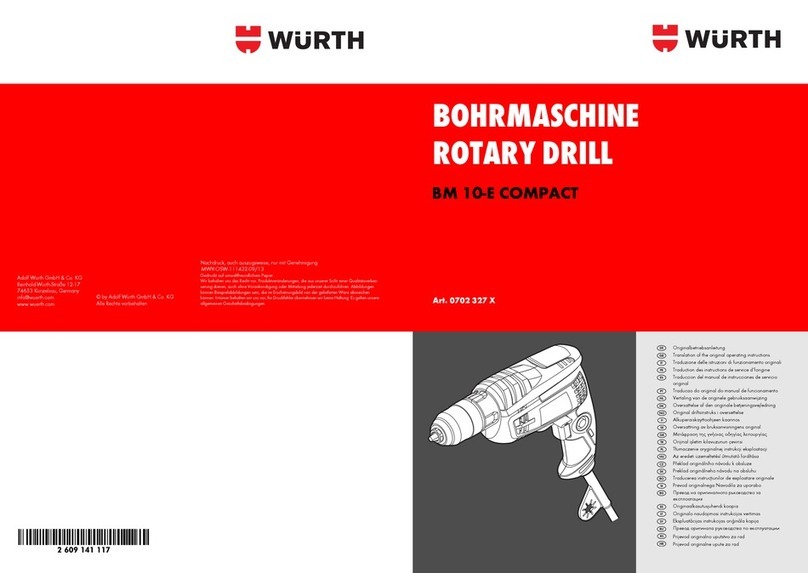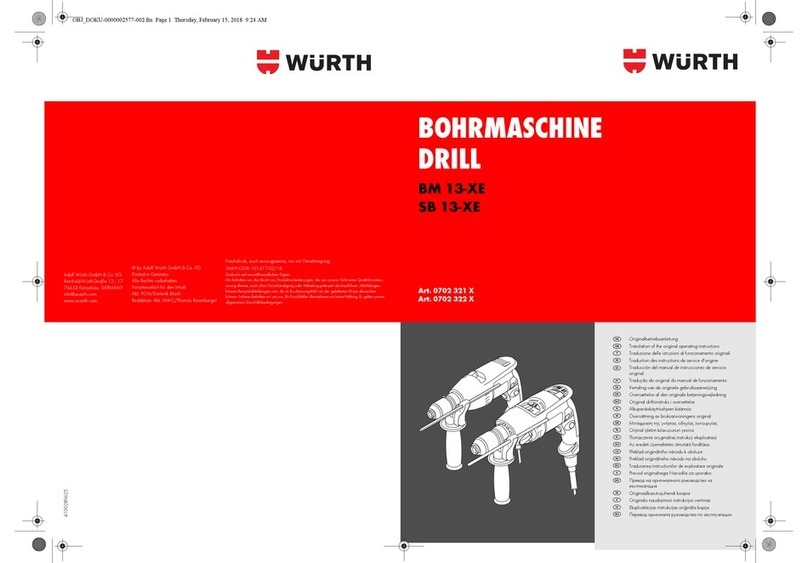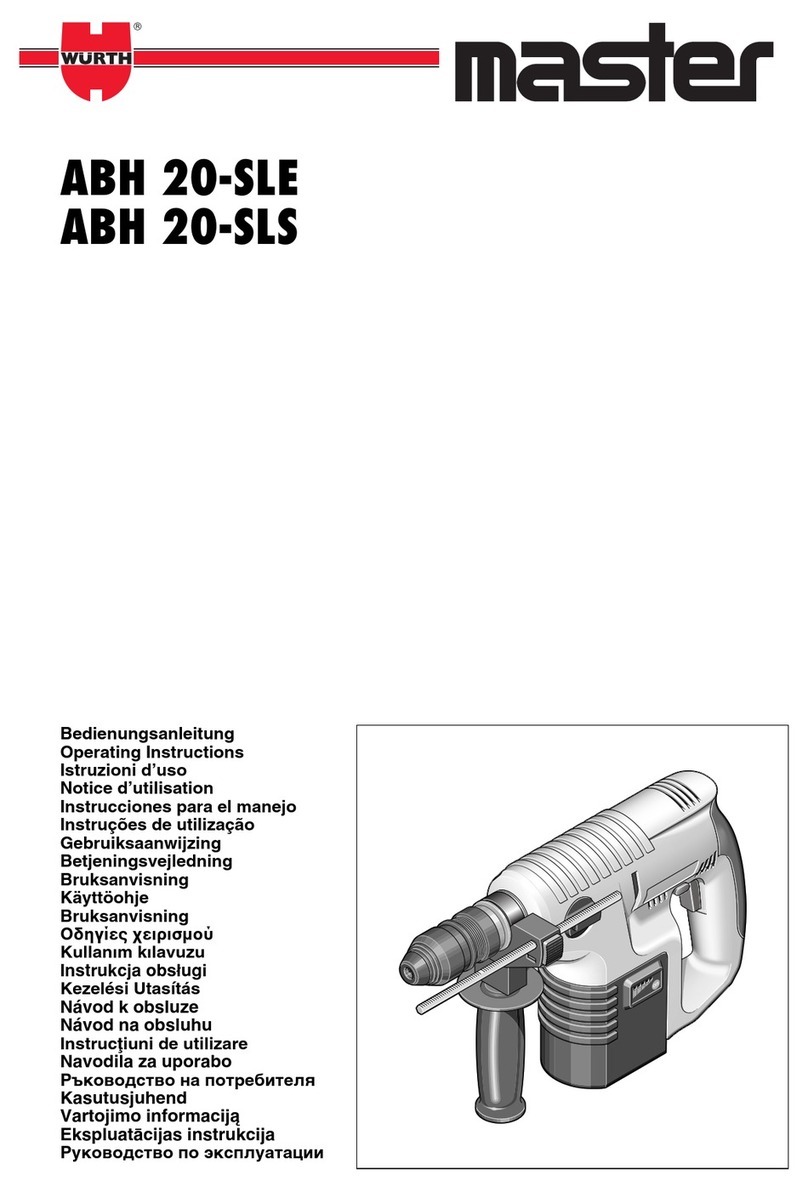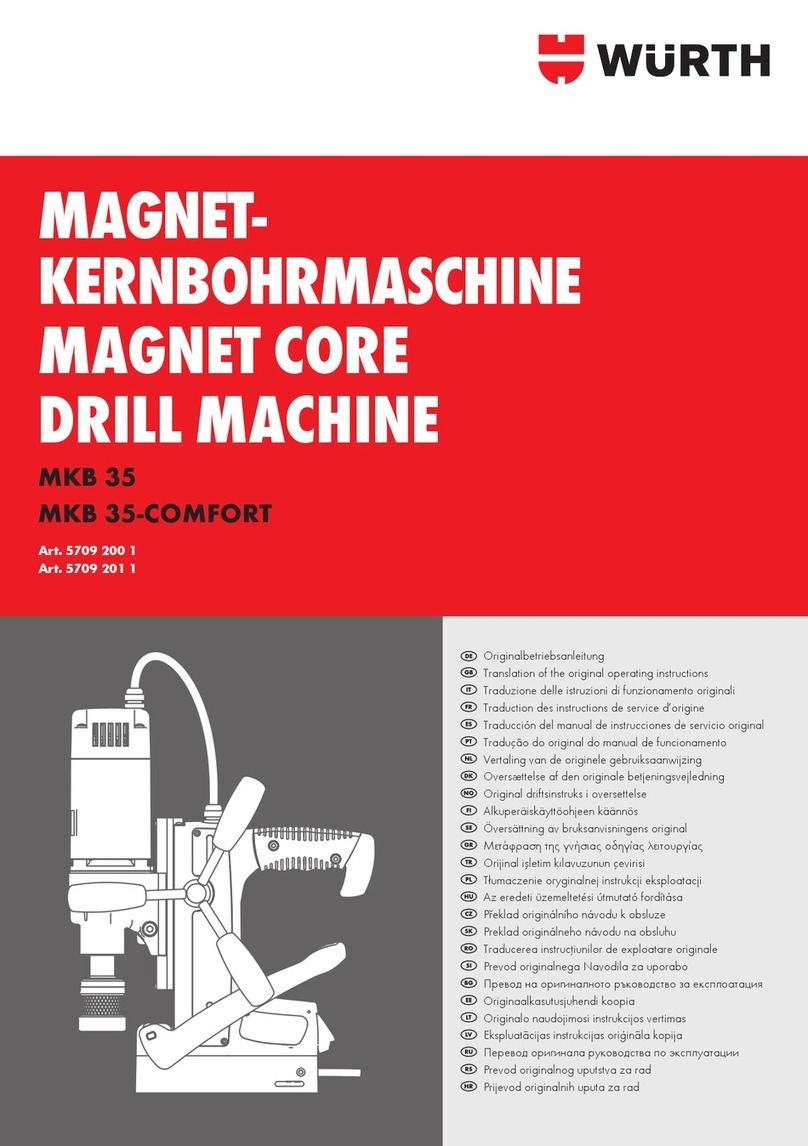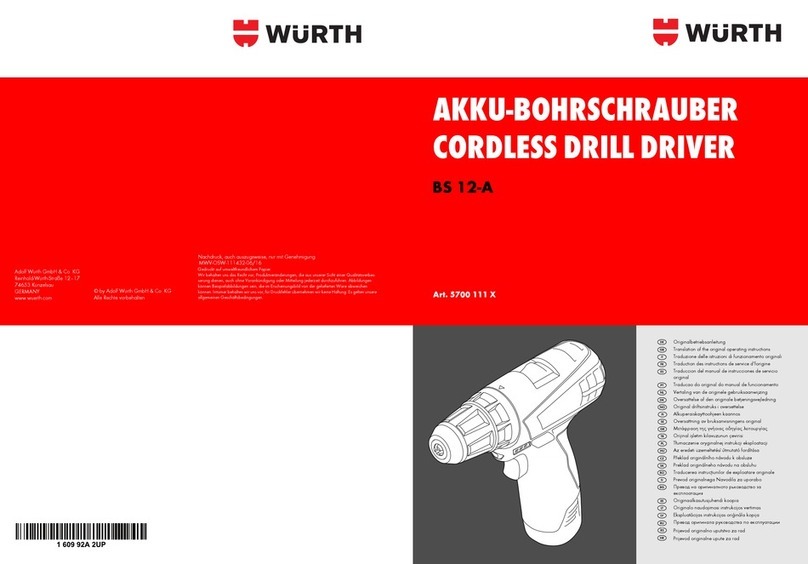
7
Ein-/Ausschalten
WARNUNG
Um ein unbeabsichtigtes Wiederanlau-
fen des Gerätes zu vermeiden, ist bei
Auslösen des PRCD-Schutzschalters 4
der Ein-/Ausschalter 2auszuschalten.
Schutz vor Überlastung
Die 8 LED-Leuchten 1zeigen die Motorbelastung
an. Dabei werden folgende Zustände unterschieden:
2x blau: Leerlauf/geringe Bohrbelastung
4x grün: Normale Bohrbelastung
2x rot: Überlastung
Bei Überlastung wird die Drehzahl des Motors elek-
tronisch 6 mal pulsierend vermindert um den Bedie-
ner zu warnen. Während der Überlastung blinken
die LED-Leuchten sechs Mal rot-grün/grün-rot.
Danach bleiben sie dauerhaft rot. Der Motor
schaltet automatisch ab und kann sofort wieder
eingeschaltet werden.
Softstarter
Mit dieser Funktion wird das Anbohren der Oberä-
che erleichtert.
Funktionsweise: Maschine normal einschalten.
Wenn der Softstarter 3eingeschaltet wird, läuft die
Maschine für 10 Sekunden mit halber Geschwindig-
keit. Währenddessen leuchtet die erste LED lila.
HINWEIS
Verwenden Sie der Softstarter nur
für kurze Zeit für das Anbohren der
Oberäche.
Rutschkupplung
Beim Verkanten des Bohrers setzt die Sicherheits-
kupplung ein. (In bestimmten Situationen können
die LED‘s bereits rot blinken.) Die Maschine wird
automatisch ausgeschaltet. Die Bohrkrone vorsichtig
lösen. Hierfür niemals den Ein-/ Ausschalter 2dazu
verwenden! Danach können Sie normal weiter
bohren.
Unterspannungsschutz
Wenn die Maschine eine zu niedrige Versorgungs-
spannung feststellt, wird die Maschine ausgeschal-
tet. Alle LED-Leuchten leuchten dann weiterhin blau.
Schalten Sie die Maschine aus und wieder ein.
Bohren handgeführt
WARNUNG
Achten Sie bei handgeführten Bohren
mit der DS 180 auf die maximalen
Bohrdurchmesser:
• Nass in Beton: Ø40 mm
• Trocken in Mauerwerk: Ø122 mm
Bohrkrone 31 montieren
■Gewinde der Bohrkrone 31 und der Werkzeug-
aufnahme 5säubern und einfetten.
■Bohrkrone 31 auf Werkzeugaufnahme 5
schrauben und mit den mitgelieferten Schlüsseln
festziehen.
Wasser anschließen
■Wasserabsperrhahn 6schließen.
■Wasserzufuhrschlauch an Wasserhahn oder an
Wasserdruckbehälter anschließen.
■Bei Verwendung des Wasserdruckbehälters auf
ausreichenden Druck achten.
■Wasserdurchußanzeiger 9beachten.
Nassbohren handgeführt
■Für Nassbohren önen Sie den Wasserabsperr-
hahn 6und schalten Sie die Maschine ein 2.
■Halten Sie die Maschine so fest wie möglich.
■Benutzen Sie beim Bohren immer den Gri 10
vorne an der Bohrmaschine.
■Setzen Sie die Bohrkrone auf der zu bohrenden
Oberäche leicht geneigt an. Empfehlung:
Nutzen Sie den Softstarter 3.
■Nachdem sich die Bohrkrone in die Oberäche
eingebohrt hat richten Sie diese rechtwinklig zur
bearbeitenden Fläche aus.
■Mit gleichmäßigem Vorschub bohren. Das Gerät
nicht überlasten.
■Das beim Bohren heraustretende Wasser sollte
milchig trüb und nicht klar sein.
■Nach dem Bohren Gerät abschalten und Was-
serabsperrhahn schließen.
Trockenbohren handgeführt
■Für Trockenbohren befestigen Sie den Trocken-
bohrsatz 11.
■Arbeiten Sie nur in absolut trockenem Mauer-
werk. Verwenden Sie eine leistungsfähige Staub-
absaugung. Beobachten Sie die Wirksamkeit des
Filters und wechseln Sie ihn regelmaßig.
■Halten Sie die Maschine so fest wie möglich.
■Benutzen Sie beim Bohren immer den Gri 10
vorne an der Bohrmaschine.



